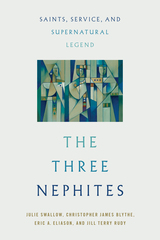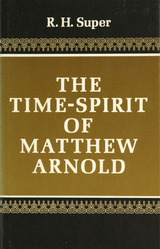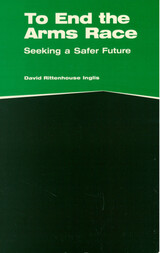6 books about Elsaesser, Thomas
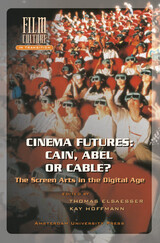
Cinema Futures
Cain, Abel or Cable?: The Screen Arts in the Digital Age
Edited by Kay Hoffmann
Amsterdam University Press, 1998
In the late 1960s, the cinema was pronounced dead. Television, like a Biblical Cain had slain his brother Abel. Some thirty years later, a remarkable reversal: rarely has the cinema been more popular. And yet, rarely has the cinema's future seemed more uncertain. Cinema Futures: Cain, Abel or Cable? presents a careful and forceful argument about predictions that tend to be made when new technologies appear. Examining the complex dynamics of convergence and divergence among the audio-visual media, the authors are realistic in their estimate of the future of the cinema's distinctive aesthetic identity, and robustly optimistic that the different social needs audiences bring to the public and domestic media will ensure their distinctiveness, as well as the necessary openness of cultural meaning and creative imput. The chief contributors include producers, historians, critics and journalists from several countries, creating a lively volume, rich in information and case studies, useful to media students and film scholars, as well as to anyone interested in better understanding the momentous changes transforming our worlds of sound and image.
[more]
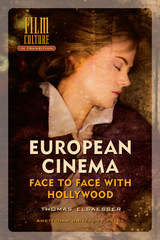
European Cinema
Face to Face with Hollywood
Thomas Elsaesser
Amsterdam University Press, 2005
Has European cinema, in the age of globalization, lost contact not only with the world at large, but with its own audiences? Between the thriving festival circuit and the obligatory late-night television slot, is there still a public or a public sphere for European films? Can the cinema be the appropriate medium for a multicultural Europe and its migrating multitudes? Is there a division of representational labor, with Hollywood providing stars and spectacle, the Asian countries exotic color and choreographed action, and Europe a sense of history, place and memory?
This collection of essays by an acclaimed film scholar examines how independent filmmaking in Europe has been reinventing itself since the 1990s, faced by renewed competition from Hollywood and the challenges posed to national cinemas by the fall of the Wall in 1989. Elsaesser reassesses the debates and presents a broader framework for understanding the forces at work since the 1960s. These include the interface of "world cinema" and the rise of Asian cinemas, the importance of the international film festival circuit, the role of television, and the changing aesthetics of auteur cinema. New audiences have different allegiances, and new technologies enable networks to reshape identities, but European cinema still has an important function in setting critical and creative agendas, even as its economic and institutional bases are in transition.
This collection of essays by an acclaimed film scholar examines how independent filmmaking in Europe has been reinventing itself since the 1990s, faced by renewed competition from Hollywood and the challenges posed to national cinemas by the fall of the Wall in 1989. Elsaesser reassesses the debates and presents a broader framework for understanding the forces at work since the 1960s. These include the interface of "world cinema" and the rise of Asian cinemas, the importance of the international film festival circuit, the role of television, and the changing aesthetics of auteur cinema. New audiences have different allegiances, and new technologies enable networks to reshape identities, but European cinema still has an important function in setting critical and creative agendas, even as its economic and institutional bases are in transition.
[more]
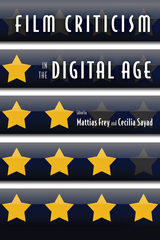
Film Criticism in the Digital Age
Frey, Mattias
Rutgers University Press, 2015
Over the past decade, as digital media has expanded and print outlets have declined, pundits have bemoaned a “crisis of criticism” and mourned the “death of the critic.” Now that well-paying jobs in film criticism have largely evaporated, while blogs, message boards, and social media have given new meaning to the saying that “everyone’s a critic,” urgent questions have emerged about the status and purpose of film criticism in the twenty-first century.
In Film Criticism in the Digital Age, ten scholars from across the globe come together to consider whether we are witnessing the extinction of serious film criticism or seeing the start of its rebirth in a new form. Drawing from a wide variety of case studies and methodological perspectives, the book’s contributors find many signs of the film critic’s declining clout, but they also locate surprising examples of how critics—whether moonlighting bloggers or salaried writers—have been able to intervene in current popular discourse about arts and culture.
In addition to collecting a plethora of scholarly perspectives, Film Criticism in the Digital Age includes statements from key bloggers and print critics, like Armond White and Nick James. Neither an uncritical celebration of digital culture nor a jeremiad against it, this anthology offers a comprehensive look at the challenges and possibilities that the Internet brings to the evaluation, promotion, and explanation of artistic works.
[more]
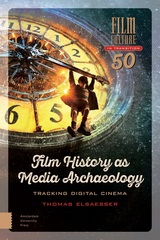
Film History as Media Archaeology
Tracking Digital Cinema
Thomas Elsaesser
Amsterdam University Press, 2016
Since cinema has entered the digital era, its very nature has come under renewed scrutiny. Countering the 'death of cinema' debate, Film History as Media Archaeology presents a robust argument for the cinema's current status as a new epistemological object, of interest to philosophers, while also examining the presence of moving images in the museum and art spaces as a challenge for art history. The current study is the fruit of some twenty years of research and writing at the interface of film history, media theory and media archaeology by one of the acknowledged pioneers of the 'new film history' and 'media archaeology'. It joins the efforts of other media scholars to locate cinema's historical emergence and subsequent transformations within the broader field of media change and interaction, as we experience them today.
[more]
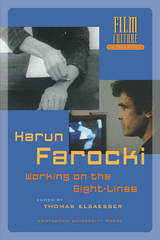
Harun Farocki
Working the Sight-lines
Edited by Thomas Elsaesser
Amsterdam University Press, 2004
Filmmaker, film essayist, installation artist, writer: the Berlin artist Harun Farocki has devoted his life to the power of images. Over the thirty-plus years of his career, Farocki has explored not the images of life but rather the life of images that surrounds us in newspapers, cinema, books, television, and advertising. Harun Farocki examines, from different critical perspectives, his vast oeuvre, which includes three feature films, critical media pieces, children’s television features, “learning films” in the tradition of Brecht, and installation pieces. Interviews, a selection of Farocki’s own writings, and an annotated filmography complete a valuable biography of this pioneering artist and his legendary career.
[more]
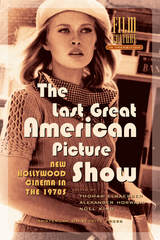
The Last Great American Picture Show
New Hollywood Cinema in the 1970s
Edited by Thomas Elsaesser, Noel King, and Alexander Horwath
Amsterdam University Press, 2004
The French Connection, The Last Picture Show, M.A.S.H., Harold and Maude—these are only a few of the iconic films made in the United States during the 1970s. Originally considered a "lost generation," the 1970s are increasingly recognized as a crucial turning point in American filmmaking, and many films from the era have resurfaced from oblivion to become a reference for new directorial talents. The Last Great American Picture Show explores this pivotal era in American film history with a collection of essays by scholars and writers that firmly situates the decade as the time of the emergence of "New Hollywood."
Sam Peckinpah, Arthur Penn, Peter Bogdanovich, Monte Hellman, Bob Rafelson, Hal Ashy, Robert Altman, and James Tobac: these legendary directors developed innovative techniques, gritty aesthetics, and a modern sensibility in American film. Here, contributors compellingly argue that the cinema of today's major directors—Steven Spielberg, James Cameron, Quentin Tarantino, Ridley Scott, Robert Zemeckis—could not have come into existence without the groundbreaking works produced by the directors of the 1970s. A wholly engaging and long-overdue investigation of this important era in American film, The Last Great American Picture Show reveals how the films of the 1970s transformed the American social consciousness and influenced filmmaking worldwide.
Sam Peckinpah, Arthur Penn, Peter Bogdanovich, Monte Hellman, Bob Rafelson, Hal Ashy, Robert Altman, and James Tobac: these legendary directors developed innovative techniques, gritty aesthetics, and a modern sensibility in American film. Here, contributors compellingly argue that the cinema of today's major directors—Steven Spielberg, James Cameron, Quentin Tarantino, Ridley Scott, Robert Zemeckis—could not have come into existence without the groundbreaking works produced by the directors of the 1970s. A wholly engaging and long-overdue investigation of this important era in American film, The Last Great American Picture Show reveals how the films of the 1970s transformed the American social consciousness and influenced filmmaking worldwide.
[more]
READERS
Browse our collection.
PUBLISHERS
See BiblioVault's publisher services.
STUDENT SERVICES
Files for college accessibility offices.
UChicago Accessibility Resources
home | accessibility | search | about | contact us
BiblioVault ® 2001 - 2025
The University of Chicago Press


